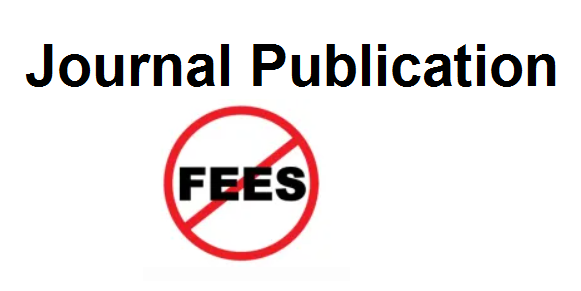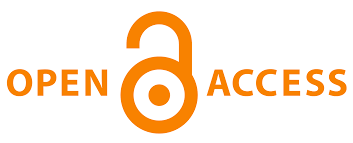Submissions

Author Guidelines
Authors are invited to make a submission to this journal. All submissions will be assessed by an editor to determine whether they meet the aims and scope of this journal. Those considered to be a good fit will be sent for peer review before determining whether they will be accepted or rejected.
An editor may desk reject a submission if it does not meet minimum standards of quality. Before submitting, please ensure that the study design and research argument are structured and articulated properly. The title should be concise and the abstract should be able to stand on its own. This will increase the likelihood of reviewers agreeing to review the paper. When you're satisfied that your submission meets this standard, please follow the checklist below to prepare your submission.
The same author cannot submit more than one original paper per issue.
All individuals listed as co-authors in the submitted article must have given their consent to authorship.
Article Composition
- Authors may submit articles in English or Georgian-English.
- Title: One line, formatted in Bold, size 14.
- Abstract: 150-250 words in the language of the article, formatted in Italic, size 12. The abstract should express the main scientific results and must not include quotes, references, figures, schemes, photos, illustrations, or tables.
- Keywords: 3-7 words, formatted in Italic, size 12.
- Figures and Tables: Should be placed below the relevant text or on the following page.
- Single Illustration: If there is only one illustration in the text, it should not be numbered.
- Titles and Captions: If necessary, figures, images, schemes, photos, illustrations, and tables can have titles and/or brief descriptions placed below the title.
Manuscript Format
- The submitted manuscript must not exceed 20 pages, including bibliography and footnotes.
- Margins: top and bottom: 2 cm; left and right: 2.5 cm
- Font: Georgian text: Sylfaen; English text: Times New Roman
- Font Size: 12
- Line Spacing: 1.5
Article Structure
All sections listed below are mandatory, except for the appendix:
- Author(s) Name and Surname, Affiliation, ORCiD ID
-
Author’s Name, Surname, Academic Degree, Academic Position, Institution, City, Country, Institutional Affiliation
-
Please also provide your ORCiD or an identifier from another recognized international platform (e.g., ResearchGate, Academia.edu, Social Science Research Network – SSRN) that allows access to your publications.
-
- Title
- The maximum number of words in the title is 20. The author's note on the title is marked with an asterisk, with an explanation at the bottom of the page.
- Keywords
- word, word, word... 3-7 words
- Abstract
-
The abstract precedes the article and describes the topic under discussion. It provides a summary of the key points the author will explore in the article. The abstract concisely conveys the content of the work, making the scientific issue clear to the reader without having to read the full publication. The purpose of the abstract is to help the reader decide whether the material is of interest, why they should read it, and what questions the research addresses. The abstract should consist of 150–250 words.
-
- Introduction
-
The introduction highlights the relevance of the topic under study, the research subject, objectives, tasks, and stages. It is important to define the problem and clearly articulate the research question.
-
- Main Body
-
The main body presents the content of the topic, with significant attention given to the description of the research and analysis of results. It also details the research process and sequential reasoning, which leads to theoretical conclusions, intermediate results, and the justification of the overall conclusion. The main body should be divided into structured sections (chapter/subchapter, paragraph, etc.), which make the article easier to understand. If possible, the text should be divided into chapters. Chapter titles may have up to two levels and should be numbered (e.g., Chapter 1 title, Subchapter 1.1 title).
-
- Conclusion
-
The conclusion extends the main body of the text. It clearly and concisely summarizes the research results, highlights the main essence of the study, its scientific novelty, and value, describes the key findings, and offers possible recommendations. It also creates the perspective and interest for further research continuation.
-
- Footnotes
-
Footnotes (referenced literature, notes, author’s explanations, and comments) should be placed at the bottom of the pages (in the language of publication).
-
Referenced literature in the footnotes should be numbered, while the author's comments and explanations should be marked with an asterisk and not numbered. If the same source is referenced multiple times on the same page, the source information should not be repeated but indicated as "ibid" with the specific page number.
-
Citations and bibliographical entries must follow the style used by the American Psychological Association (APA Style).
Example: Author(s)’ surname, first initial(s), middle initial(s), (year of publication). Article title. Publisher, volume (issue), page, article number, or DOI.
-
- References
-
The references should be presented alphabetically at the end of the manuscript in the language of the original publication.
All non-English titles must be translated into English, with the original language indicated at the end of the entry, e.g., in Georgian, in German, in Russian.
Footnotes and bibliography entries must correspond: if a source is mentioned in a footnote, it must be included in the bibliography, and conversely-any source listed in the bibliography must appear at least once in the text.
The bibliography must be formatted according to APA style.
-
Authors are required to justify citations using the DOI (Digital Object Identifier) if assigned to the publication. To find a DOI, please visit: https://www.crossref.org/guestquery
-
- Appendix
For detailed information about the article structure, please refer to the Word template.
The author is required to adhere to APA style (from December 2024).
For more information on APA style, see the link: https://apastyle.apa.org/
Submission Preparation Checklist
All submissions must meet the following requirements.
- This submission meets the requirements outlined in the Author Guidelines.
- This submission has not been previously published, nor is it before another journal for consideration.
- All references have been checked for accuracy and completeness.
- All tables and figures have been numbered and labeled.
- Permission has been obtained to publish all photos, datasets and other material provided with this submission.
Publishing permissions
If published, the article will be available for any of the reader and this does not require any additional written consent from the author.




